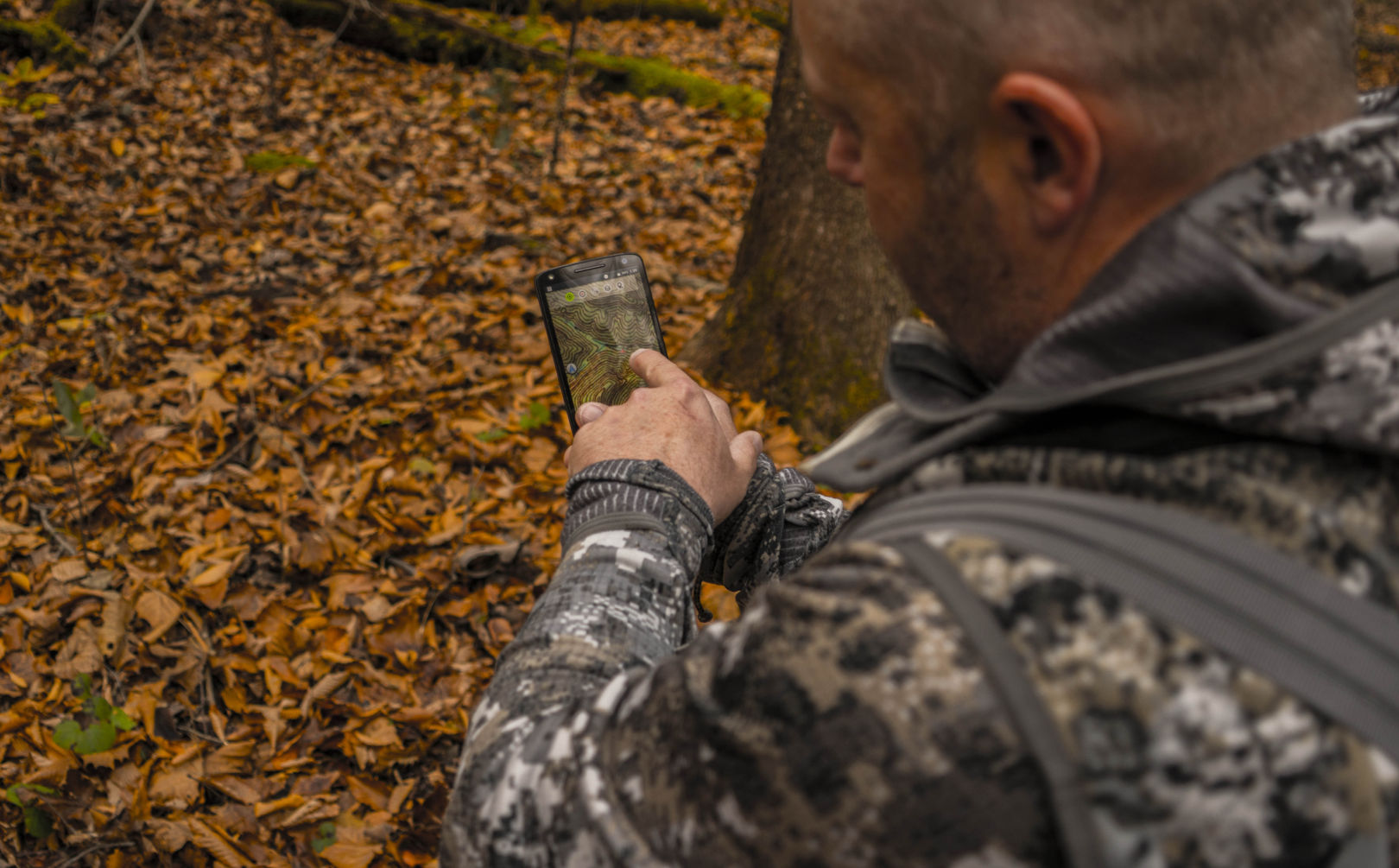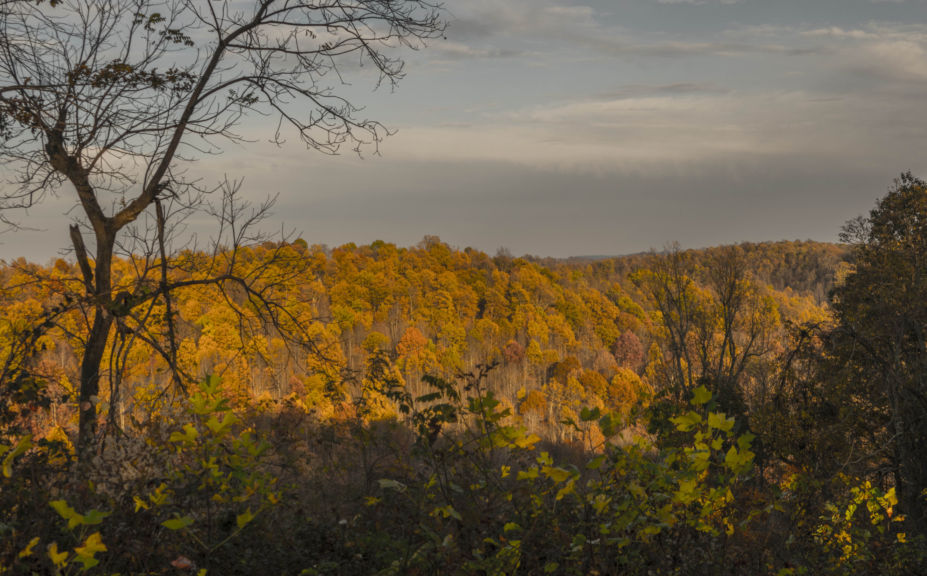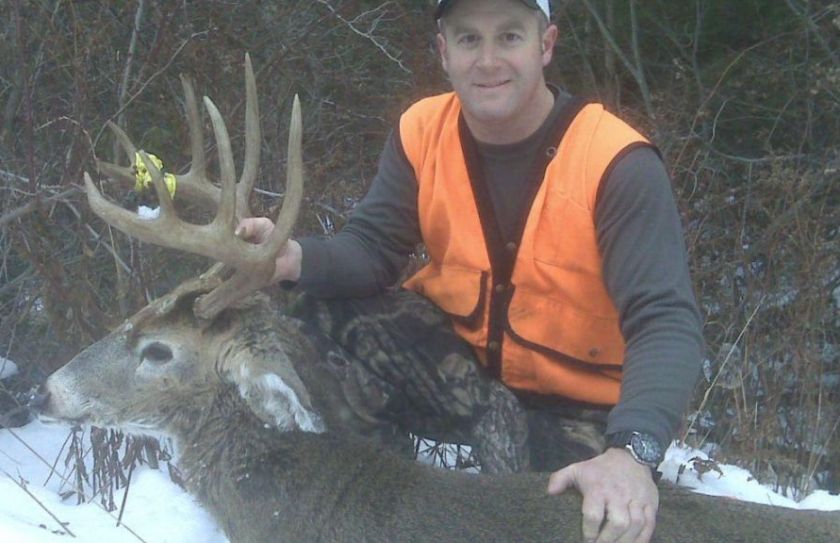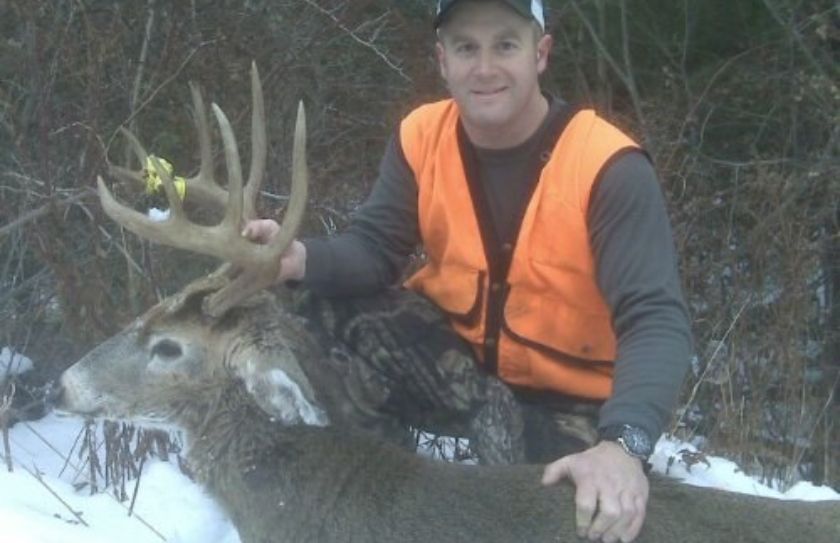
Are you hitting the woods in search of a Do-It-Yourself (DIY) public land archery monarch this fall? I am, and I can't wait! One of my favorite locations is in Southern OH, where the land is vast, rugged and remote, and the bucks can grow to be some of the largest public land bucks in the Country. I love those hills, and it's one of my favorite Autumn playgrounds. However, archers beware! Although the legends of giants may be true for the public land hotspot of your choice, success does not come easy. Here are my top 5 public land archery tactics:
Location
"Local Lore" is great, but I like to take it one step further! Any state game area has the professional resources of game biologists, foresters and conservation officers aid in your choice. When you finally capture a couple of potential Autumn playgrounds on your radar, try giving a professional a quick call. Remember, they are typically very busy, but at the same time I have found that when they realize that you are serious, dedicated and considerate...they have seemed more than willing to help! When researching the area of OH that I hunt, the local forester gave me some great advice concerning where and how to avoid hunters, as well as tips on the what to look for in terms of the best local forages, and mature buck cover choices. The details of a 5 minute conversation 4 years ago are still a part of my plans every time in the woods:
1. SW facing points can be great for hidden stands of White Oaks
2. Clear cuts = increased buck age structure
3. Heavily browsed green briar tops equal higher deer numbers
4. The majority of folks hunt within a 1/2 hour of the road, and very few venture further than 45 minutes into the hills.
5. 1 major elevation change eliminates most hunters
I enjoyed a quick conversation with the local forester, my questions were prepared, brief and to the point, and I haven't needed to contact him since. He even helped me to narrow down a few major blocks of acreage, to 2 specific areas. I believe he appreciated that I simply wanted to find a quality patch of a few thousand acres, and that I couldn't wait do the rest! Outside of a great whitetail herd that includes the potential for mature bucks, my own personal key location ingredients for any of my public land archery adventures are as follows:
1. Difficult access including water, hills and heavy cover
2. A minimum of 2 miles between roads, and the greater the distance the better
3. A lack of hunting pressure sign (stands, trails, tacks and ribbons)
4. Remote, sprawling and lightly traveled vehicle access options
Stand Choices
I have a passion for locating fresh mature buck sign. However, what is even better than finding recent buck sign? Finding the history of buck sign! The great thing about public land habitat is that mature buck sign typically isn't littering the landscape. When you discover that a bruiser has frequented the area you need to pay attention, but when you discover that multiple mature bucks have chosen a specific location to leave their mark on the habitat over the course of several years or more...WOW, you may have just stumbled upon one of the most important locations in the woods.
Historical buck patterns are great, but the next step is to preserve and protect. A hub of obvious buck activity may only encompass a few acres, but think big when it comes to public land archery hunting. Public land monsters will typically range far and wide during the rut, including 500 acres or more. Although you may establish 1-2 stand locations to take advantage of the hub of buck activity, locations within a 1/4 to 1/2 mile adjacent to that hub can be just as productive, and when you can find a great spot between 2 hubs or more, count yourself extremely lucky and enjoy! My own personal "can't miss" stand set-ups are as follows:
1. Cruising benches above and below a hub of mature buck activity
2. Nearby saddles
3. The opposite side of clearcuts from major mature buck sign
4. Food source flats above and/or below the hub
5. Slight cuts or draws that lead away from or to, major clearcut bedding areas or mature buck hubs
Timing
Hidden stands of quality white oaks can be incredible to hunt during the early archery season, but those opportunities are difficult to locate. Where I personally hunt there are many oaks scattered throughout the hills, so without a hidden crop of preferred White Oak acorns, a nice grove of oaks alone really don't offer anything special. If you live out of state, focusing on a few hunts for several days will give you the best bang for your buck, while keeping your opportunities per sit as high as they can be. I look for 2 specific factors to maximize my time:
1. Cold Fronts
2. Peak to Post-rut
Anywhere in the North 1/2 of the Country, I will target Halloween to the first 3 weeks of November, but in order to make sure that I capture the highest level of quality sit opportunities, I refuse to hunt when it's warm. While taking a week of vacation and hunting for 7 days may seem like the best approach, I personally find that within those 7 days, are 4-5 days I wouldn't have otherwise hunted if I had a choice. When I make my trek to OH this year, my wife, hunting buddy's, and there employers are "on notice" that when the conditions are cold from Halloween to November 20th, it's time to hit the woods!
I expect to hunt 3-4 days in a row at most, and then will wait for the next cold front to pass through in order to take advantage of the calm and cold period that follows the front. Each day of hunting carries with it a value. That value is determined by the time of season, time of day and individual stand location, however weather will dictate the deer activity and my hunting movements that follow. If the value of a sit is expressed in a scale of 1-10, my goal is to never stalk a public land stand if the indicated value is below an 8. Even during the peak rut, a warm and windy can still be productive, but still pales in comparison to a high value cold front day. Of course the value of a sit is completely subjective, but when considering the 2 extremes, but I have experienced that in order to be consistently successful, I can't afford to burn a stand out on a 2/10 sit, at the expense of 8-10/10 value sits.
**In November of 2016, I saw a great cold front moving across the Midwest and opted to travel 11 hours to Ohio for a high quality public land hunt. Within a few hours of my arrival, my Ohio tag was filled. Watch the video below for more details...
Access
I personally enjoy well-used, parking lots and access trails, in particular when they travel for many miles. On one hand you can use those trails to access deep into the heart of a remote section of land very quickly, and on extremely predictable patterns of hunting movement. There is nothing better than either accessing through very difficult habitat, or circling back to place a great amount of acres between yourself and predictable hunting patterns. Your stand location should be a stopping point of hunting pressure, placing yourself at the edge of a mature buck's core area, and not directly within the center. By conservatively chipping away at the outside of an unpressured mature buck hotspot, you can take advantage of your chosen stand locations based on the quality of the set-up, while still preserving the location for another sit or two. My #1 public land archery access tactic is this:
*Access your stand locations without disrupting a mature bucks core area, while placing as much cover between yourself and knowng predictable hunter movements as possible.
Stand Rotation
How many bow stands to you use on a parcel of private land? I have personally used over 40 different stand locations in a season, on private land. However when I hunt long-distance cruising mature bucks on public land, the number of stands that I use is greatly deminished! In OH I enjoy a selection of stand that are towards the top of the ridges on feeding and cruising benches, as well as the saddles across the points and ridgetops that relate to those benches. Also, some of my favorite trees are located to take advantage of lower bedding areas and hidden low-elevation flats that either blow my scent into non-deer areas above my position in the morning, or down and away from my position with the falling thermals in the evening.
Changing elevation is a great tactic! By hunting at one elevation in the morning or on one particular day, and hunting low in elevation during the next sit, you can minimize your potential hunting impact on a buck's core area, while maintaining a high value sit on fresh stands over the course of a 3-4 day hunt.
Conclusion
Public land hunting is not for the weak of heart or mind. During our annual stand location and scouting effort, it's typical that we will be in the woods for 8-10 hours, walk 6-8 miles or more, and change the level of elevation at least 2-4 times, including 200-300' or more each time! However, the amount of acres to hone your craft are often expansive, seemingly unspoiled land is yours to discover and an older age structure of bucks is available in the right locations. I bow hunt public land for the size of available acres to roam, the potential size and age of the available bucks, and the shear challenge of hunting some of the largest Autumn playgrounds in the country. A DIY public land archery hunt may not be for everyone, but it is for me, and when a late October cold front comes screaming through the region, you can bet I will be driving on it's heals like a rut-crazed buck chasing a doe!



